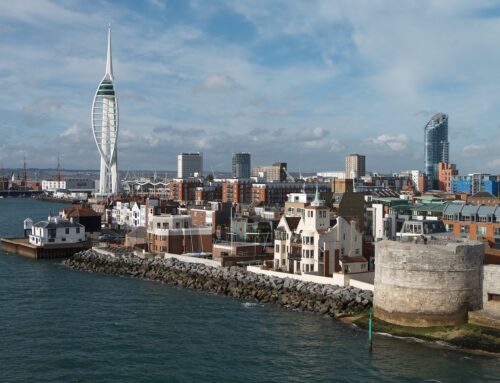The engineering design process in Southampton is at the heart of creating innovative and efficient solutions in fields like construction, manufacturing, and infrastructure development. This process involves a series of steps, from identifying problems and generating ideas to developing detailed plans and executing projects. While essential, the engineering design process can often be time-consuming and complex, especially for larger projects.
Streamlining this process is crucial for businesses and organisations aiming to save time, cut costs, and improve overall project outcomes. By optimising each stage of the process, teams can ensure better communication, smoother collaboration, and faster decision-making. This is particularly important in Southampton, where industries rely on efficient engineering practices to meet the demands of a fast-paced and competitive market.
In this article, we at Pure Construction will explore how to streamline the engineering design process in Southampton, focusing on practical strategies that can simplify workflows and boost productivity. From understanding the key stages of the process to addressing common challenges and implementing modern tools, we’ll provide actionable insights tailored to the needs of businesses and engineering professionals.
Streamlining the design process not only enhances efficiency but also ensures that projects meet high standards without unnecessary delays. By adopting these approaches, you’ll be better prepared to manage engineering projects effectively, delivering results that align with your goals and those of your stakeholders.
Understanding The Engineering Design Process In Southampton
The engineering design process serves as the foundation for creating innovative solutions across various industries, including construction, manufacturing, and infrastructure development. Understanding this process is the first step towards streamlining it and ensuring efficiency at every stage.
Key Stages of the Engineering Design Process
- Identifying the Problem: Every project begins with identifying a problem or need. This involves understanding client requirements, analysing constraints, and defining clear objectives for the project. In Southampton, where industries are diverse, this step ensures the design aligns with specific local demands, such as environmental considerations or urban infrastructure challenges.
- Research and Idea Generation: This stage involves gathering data, studying similar projects, and brainstorming potential solutions. Teams evaluate feasibility and explore various approaches to determine the best course of action.
- Concept Development: Once ideas are generated, the most promising ones are turned into detailed concepts. This includes creating rough sketches, initial models, or prototypes to visualise how the solution will work.
- Design and Testing: At this stage, engineers develop comprehensive designs using tools like CAD software. The designs are tested under simulated conditions to identify potential flaws and ensure reliability.
- Implementation and Feedback: The final design is executed, and feedback is gathered from stakeholders. This feedback is essential for refining the process and ensuring that future projects are even more efficient.
Challenges in the Process
While the engineering design process is structured, it can be hindered by challenges such as poor communication, lack of resources, or insufficient time for testing. In Southampton, fast-paced industrial demands may also pressure teams to cut corners, leading to inefficiencies or errors.
By thoroughly understanding each stage and its associated challenges, businesses can begin to identify areas for improvement. Whether it’s adopting better tools, enhancing collaboration, or streamlining decision-making, a deeper knowledge of the engineering design process is the key to making it more efficient.

Common Challenges In The Engineering Design Process And How To Overcome Them
The engineering design process in Southampton is a vital part of delivering successful projects. However, it often comes with challenges that can slow progress and increase costs. Identifying these challenges and implementing strategies to overcome them is essential for streamlining the process and achieving better results.
1. Communication Breakdowns
In multi-disciplinary projects, poor communication between teams can lead to misunderstandings, errors, and delays. This is particularly common in large-scale projects involving diverse stakeholders. To address this, establish clear communication channels, hold regular meetings, and use collaborative tools like project management software to keep everyone aligned.
2. Time Constraints
Tight deadlines are a common issue in engineering projects. Rushed timelines can compromise quality and lead to costly errors. The solution lies in effective planning and setting realistic milestones. Breaking the project into manageable phases and monitoring progress regularly can help teams stay on schedule without compromising quality.
3. Insufficient Resources
A lack of resources, whether it’s skilled personnel, equipment, or budget, can hinder progress. This is often a challenge in industries facing fluctuating demand. To mitigate this, businesses can prioritise resource allocation by focusing on critical stages of the design process and outsourcing non-core tasks to specialists.
4. Inadequate Testing and Validation
Skipping or rushing through the testing phase can result in flawed designs that fail during implementation. To overcome this, allocate sufficient time and resources for testing. Using simulation tools and prototyping methods can help identify and resolve issues early in the process.
5. Adapting to Changing Requirements
Changes in client requirements or regulatory standards can disrupt the design process. This is especially relevant in Southampton, where local regulations may evolve. Building flexibility into the design process by maintaining adaptable plans and open communication with clients can help address these changes effectively.
By recognising and tackling these challenges, teams involved in the engineering design process can work more efficiently and deliver high-quality results. With the right tools, planning, and collaboration, these obstacles can be turned into opportunities for improvement.
Top Tools And Techniques To Simplify The Engineering Design Process In Southampton
Streamlining the engineering design processes in Southampton requires the use of modern tools and effective techniques that improve efficiency, reduce errors, and save time. By integrating advanced technologies and adopting best practices, engineering teams can achieve better outcomes with less hassle.
1. Computer-Aided Design (CAD) Software
CAD software is a cornerstone of the engineering design process. Tools like AutoCAD, SolidWorks, and Fusion 360 allow engineers to create detailed 2D and 3D models of their designs. These models make it easier to visualise the final product, test its functionality, and make adjustments before actual implementation. For projects in Southampton, where precision is critical, CAD tools streamline the design phase and ensure accuracy.
2. Project Management Platforms
Efficient project management is vital to keep the design process on track. Tools like Trello, Asana, and Microsoft Project help teams organise tasks, set deadlines, and monitor progress. These platforms enhance communication among team members, ensuring that everyone stays aligned throughout the project lifecycle.
3. Simulation and Prototyping Tools
Simulation software, such as ANSYS or MATLAB, allows engineers to test their designs under virtual conditions. Prototyping techniques, including 3D printing, help bring ideas to life quickly and identify potential issues early. These tools save time and resources by minimising the need for costly physical testing.
4. Collaborative Software
Collaboration is key in multi-disciplinary projects. Platforms like BIM (Building Information Modelling) enable different teams—architects, engineers, and contractors—to work together seamlessly. BIM creates a shared digital environment where all stakeholders can access and update project data in real time, reducing the likelihood of errors.
5. Lean Design Principles
Adopting lean design principles can also simplify the process. This involves eliminating unnecessary steps, focusing on value-added activities, and continuously improving workflows. Lean methods help teams reduce waste and optimise resource usage, which is particularly beneficial for tight budgets and timelines.
By leveraging these tools and techniques, engineering teams in Southampton can simplify the design process, enhance collaboration, and achieve their goals more efficiently. Incorporating modern solutions into the engineering design processes in Southampton ensures that projects are completed faster, with fewer errors and better results.

The Benefits 0f A Streamlined Engineering Design Process In Southampton
Streamlining the engineering design process offers numerous benefits for businesses, project teams, and clients alike. By improving efficiency and reducing complexity, a well-optimised process ensures better outcomes, faster delivery, and cost savings.
1. Time Efficiency
One of the biggest advantages of a streamlined process is time savings. By eliminating unnecessary steps, improving communication, and using modern tools, project timelines can be significantly shortened. This is particularly important in Southampton’s fast-paced industries, where meeting deadlines is critical for success.
2. Cost Savings
A streamlined process reduces waste in terms of both time and resources. Efficient workflows minimise the risk of costly errors or delays. For example, using simulation software during the design phase can identify potential issues before construction begins, saving money on rework and materials.
3. Improved Collaboration
Streamlining fosters better collaboration among team members and stakeholders. When workflows are clear and communication tools are in place, everyone involved in the project can stay aligned. This is especially beneficial for complex projects that require input from multiple disciplines, such as civil, mechanical, and electrical engineering.
4. Higher Quality Designs
A streamlined design process focuses on achieving high-quality results. By dedicating more time to testing and refinement, engineers can ensure that their designs meet all requirements and perform reliably. This is essential for Southampton’s industries, where safety and durability are often top priorities.
5. Better Client Satisfaction
Clients benefit directly from a streamlined process. Faster project completion, lower costs, and high-quality results lead to improved satisfaction. Clear communication throughout the process also helps build trust and ensures that client expectations are met or exceeded.
6. Increased Competitiveness
For engineering firms in Southampton, a streamlined process enhances competitiveness. Delivering projects efficiently and at a lower cost gives businesses an edge in securing new contracts and retaining clients in a competitive market.
By focusing on these benefits, engineering teams can make the engineering design processes in Southampton more efficient and effective, ensuring success for all parties involved.
Optimising The Engineering Design Processes In Southampton With Expert Support
Streamlining the engineering design process in Southampton is not just about saving time and money—it’s about creating designs that are efficient, reliable, and ready to meet the challenges of today’s industries. By addressing common challenges, adopting modern tools, and focusing on collaboration, businesses can ensure their projects are completed on time and to the highest standards.
At Pure Construction, we understand the complexities involved in the engineering design process. Our team is dedicated to simplifying workflows and delivering tailored solutions that align with your goals. Whether you’re managing a large-scale infrastructure project or a smaller bespoke design, we bring expertise, advanced tools, and a commitment to quality to every project we undertake.
We believe that every project deserves a clear and efficient process, from concept development to final implementation. By working closely with you, we ensure that each stage is optimised, eliminating unnecessary steps and focusing on what matters most—delivering exceptional results.
If you’re looking to streamline your engineering design process in Southampton, we’re here to help. Let us guide you through every step of the journey, ensuring that your project runs smoothly, stays within budget, and achieves the outcomes you envision. Contact us today to discuss your next project and see how we can make your design process seamless and successful.








